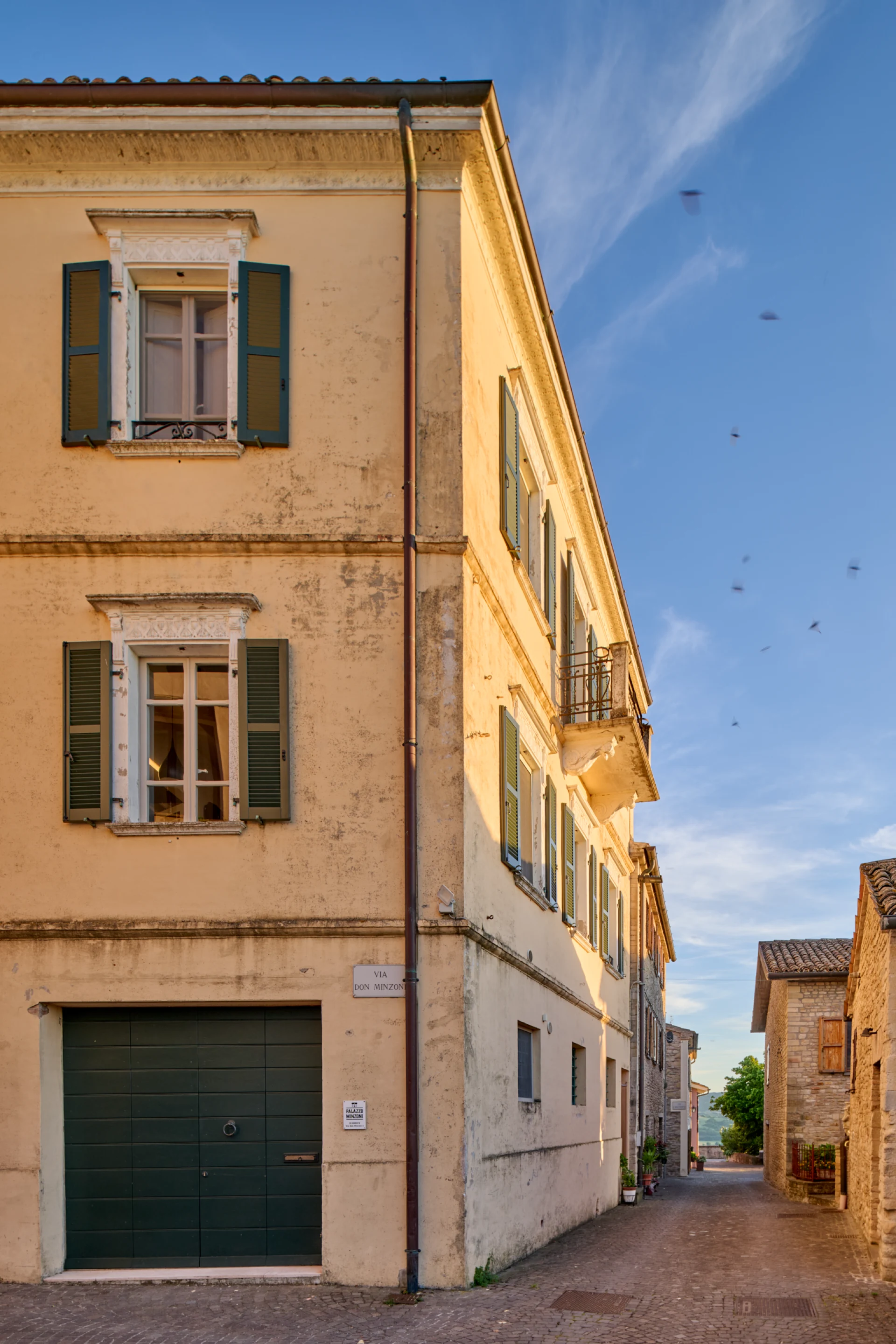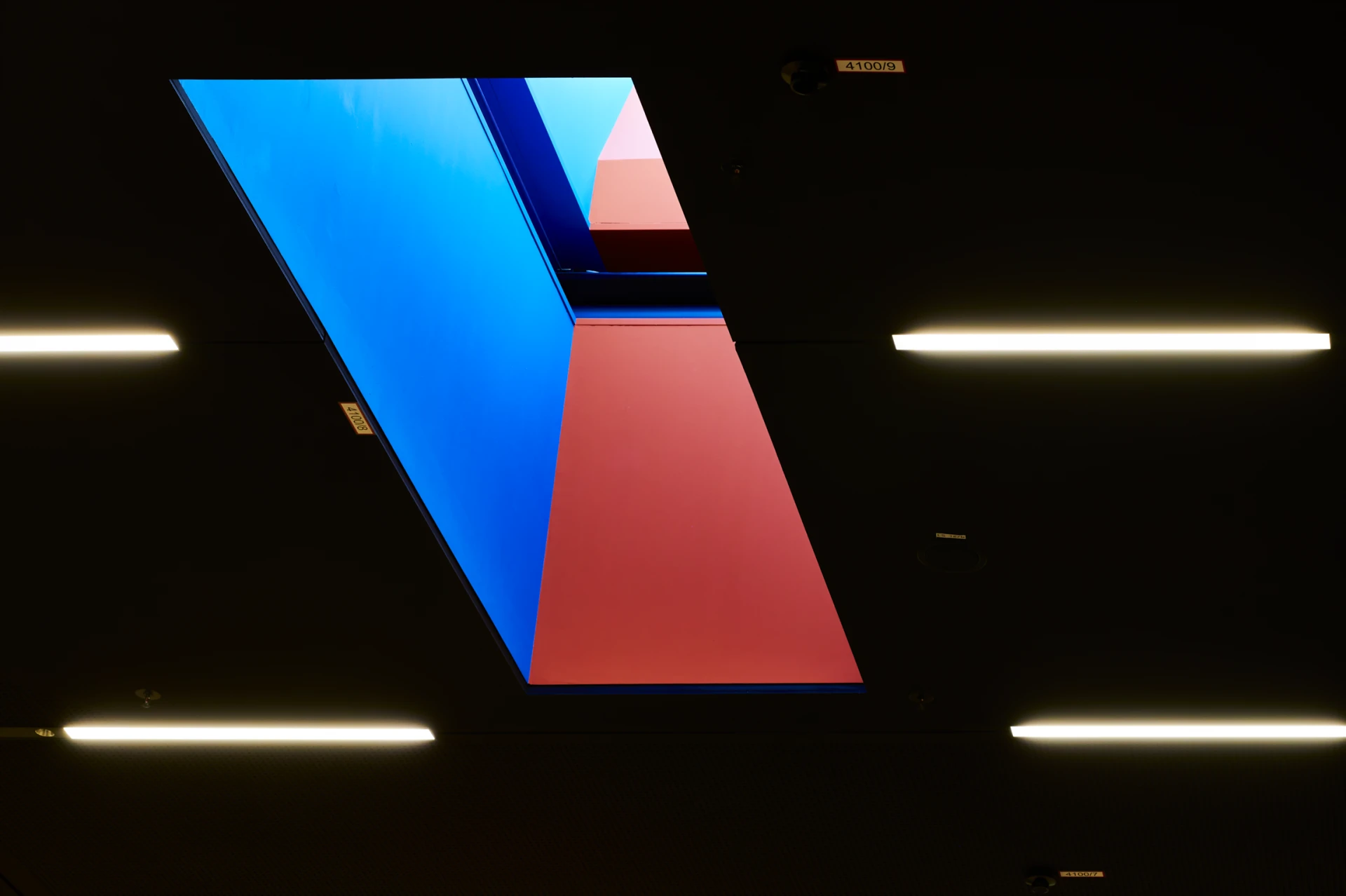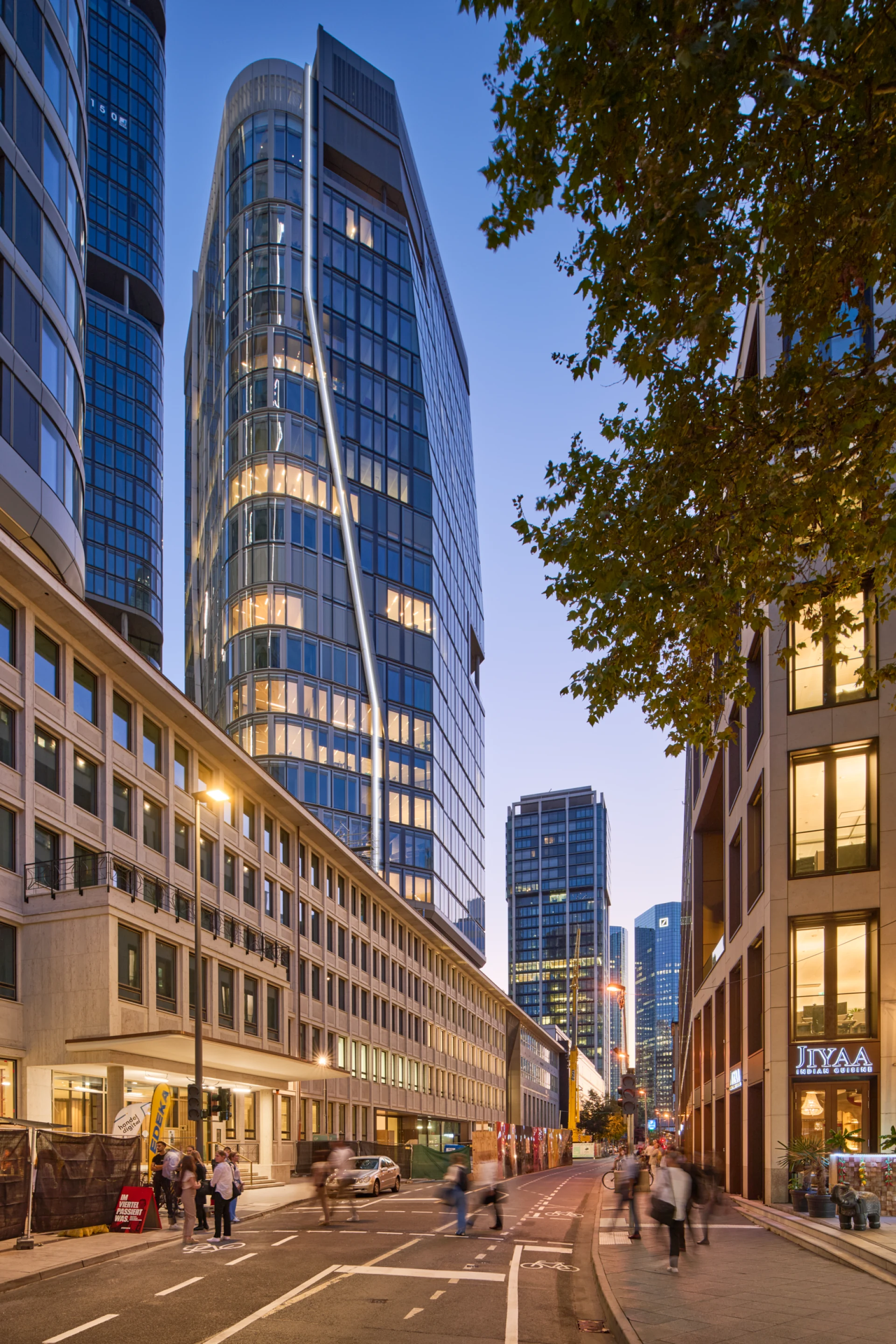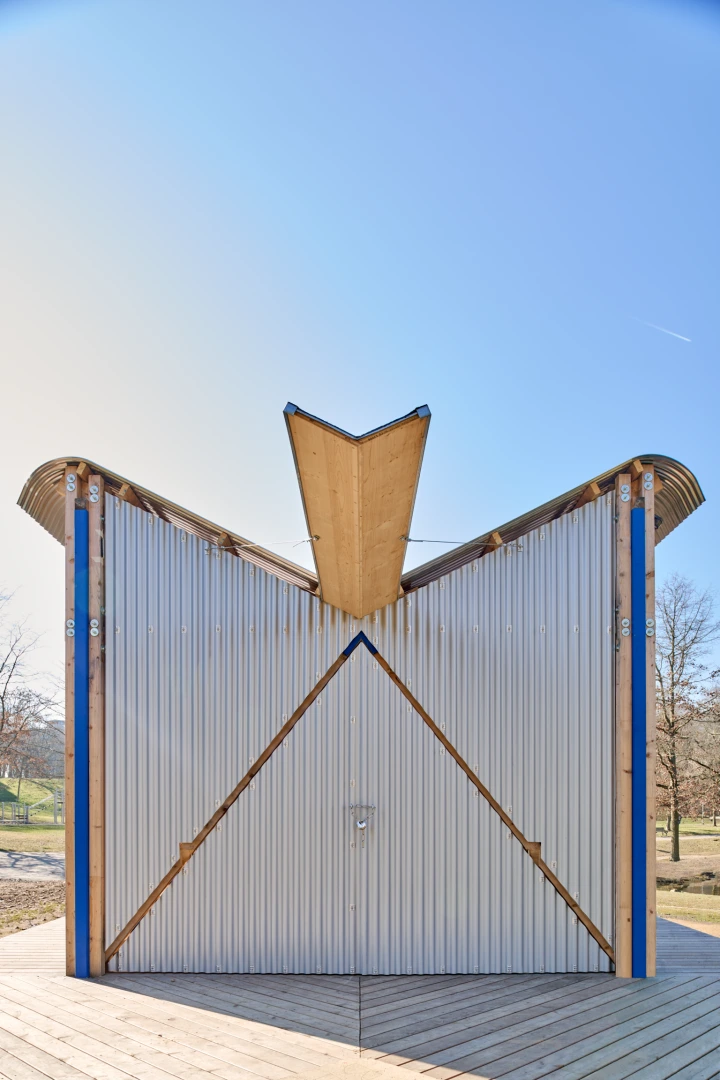Form follows function? Architecture and photography in the context between art and purpose
The essence of photography: reality, light and the moment
Photography is fundamentally a technical process and at the same time a profoundly creative act. In its origins, it is based on the principle of making light visible. Reflected radiation is focused using a lens and projected onto a light-sensitive material. Whether analog film or digital sensor: the photo is created as an impression of a specific moment - as a seemingly objective image of reality. But this image is never quite that neutral. Photography never depicts “reality” as it is, still a section of it. The decisive moment, the selected image section, the perspective, the focus - all of these are consciously (or unconsciously) chosen by the photographer. These are decisions that are captured in a fraction of a second and determine what becomes visible and what does not.
Another factor that characterizes every photograph is light. Without light, there is no photography. Light makes things visible, it creates reflections, shadows, contrasts and atmospheres. It changes in color, direction and intensity over the course of the day - sometimes soft and diffuse, sometimes hard and direct. These characteristics are directly reflected in the photographic image and give each picture its own atmosphere. you could say that photography is always the interplay of two actors: light and photographer. While the light sets the stage, the photographer decides when and how the curtain rises. So every photograph is not just a technical image, but also a conscious interpretation of a moment in space and time.
Architectural photography as a service: documentation and creative restraint
In its practical purpose, architectural photography is first and foremost a service. Architectural studios, property developers or public clients commission photographers to professionally document their completed projects. The focus is not on the image as an artistic work, but on the visible implementation of the architectural idea: How does the space look? How can the lighting, materials and proportions be experienced in the built form? The task of architectural photography is to make this intention visible - as precisely and yet atmospherically as possible. Important aspects are lines of sight, lighting conditions, room layouts and the appearance of the materials used. It is not about spectacular effects, but about authentically reflecting the design in the image: The way the architect envisioned the space.
Light also plays a decisive role here too - but not as a purely creative means, but in accordance with the architectural planning. It supports the design, accentuates details or directs the eye - but always within the framework of what the architecture itself specifies. Atmospheric staging is possible as long as it does not distort the design statement. Bernd and Hilla Becher provide a radical example of this documentary approach. Their systematic photographic recording of industrial architecture reduced buildings to their pure form and structure - without any staged light, people or contextual references. Although this aesthetically neutral representation has an artistic value, it also demonstrates how far the creator can withdraw in the photographic process in order to place the object at the center.
In this way, architectural photography as a service moves between objective documentation and subtle interpretation. The skill is often in taking a step back in terms of design - and still creating images that are convincing, moving and allow the depth of the design to be experienced.

Architectural photography as an art genre: when architecture fades into the background
The fact that architectural photography can be more than pure documentation is demonstrated at last by Bernd and Hilla Becher. Their strictly systematic photographs of industrial buildings are now regarded as classics of conceptual art, although at first glance they appear almost over-documentary. It is precisely this sober form of representation, the complete reduction to structure, grid and repetition, that lifts the photographs out of their purely functional context and transfers them into the sphere of art. But where exactly is the boundary between service and art? A key difference is in the commission and thus in the freedom of photographic intention. In commissioned photography, the photographer is bound by the client's objectives. In artistic photography, on the other hand, the visual language does not follow any external requirements, but arises solely from the photographer's own vision.
In the case of the Bechers, it was no longer about the buildings themselves. Not about their use, context or effect. The buildings were reduced to their pure form, to volume, construction and structure. Architecture only served as a starting point for a photographic examination of order and typology. Function, scale or spatial experience receded completely into the background. Architecture became a visual raw material, a source of inspiration, a pure idea of form.
In artistic architectural photography, terms such as “visual axis”, “spatial division” or “function” often lose their significance. Instead, the focus shifts to abstract details, graphic surfaces, light gradients or material contrasts. Photographs are created that are effective even without the knowledge of the architectural foundation. Images that stand for themselves and have an aesthetic value of their own. One could say that at the point where it is no longer decisive whether the motif shows a building or an object of another kind, photography begins to detach itself from architecture. It becomes architecture-inspired photography, in which the built space is no longer the goal, but the tool. A stage for light, form and artistic interpretation.

And what about the architecture itself - art or function?
Architecture is often not understood as a pure art. Unlike painting or sculpture, it is purposeful and functional. Buildings are not created for their own sake, but to create spaces for people: to live, work, think and experience. This use is deeply rooted in the DNA of architecture, just as light is an essential component of photography. However, it is precisely within this purpose limitation that creative scope opens up that goes far beyond pure functionality. Architectural forms can develop out of their purpose or be deliberately set against it. They can be restrained, rational, minimalist. But they can also be expressive, emotional and provocative, like the seemingly weightless designs by Zaha Hadid. Architecture reacts to contexts and at the same time creates new realities.
A central criteria of art is its ability to trigger emotions. And that is exactly what architecture can do. We enter spaces that give us pause. We look at facades that disturb, affect or inspire us. Even if a building primarily provides a roof over our heads, it can have an aesthetic effect on another level, divide opinions and create identity. This emotional effect is subjective - and this is precisely where it is found. Architecture is perceived, experienced and evaluated. You either like it or you don't. But it does not remain neutral.
In this context, architecture is undoubtedly a form of applied art for me. It combines the functional with the creative, the useful with the expressive. A building can also be a sculpture. A walk-in, changeable, usable sculpture in space.
A good example of this is the Museum Reinhard Ernst in Wiesbaden. Even as a building, it appears sculptural, almost monumental, and remains open to interpretation. It polarizes, it challenges. At the same time, its interior is perfectly tailored to the needs of the visitors and the art on display. Space, light and pathways merge into one experience: functionally well thought out, emotionally tangible. The art of architecture lies precisely in this combination.

Conclusion: Form follows function - with room for interpretation
Both architecture and photography are undoubtedly to be understood as independent disciplines of art. They have their own forms of expression, their own rules, their own stylistic elements. Architectural photography, however, as the interface between the two fields, remains a factual documentary medium in its basic function. Its purpose lies primarily in the visible representation of architectural visions. It makes design ideas tangible, translates spatial concepts into images and remains committed to the architect's intention. The focus here is always on function.
Although photography always depicts a section of reality, it is never completely neutral. The photographer always has influence: through perspective, timing, lighting, framing and staging. These decisions ultimately determine whether an image documents or interprets, whether it explains an architectural project objectively or transforms it artistically. If architectural photography moves too much in the direction of art, it inevitably distances itself from the architecture itself. Conversely, architecture loses its functional core if it is understood purely as an artistic object. This field of tension shows that there is no artistic architectural photography in the strict definition. At least not as long as architecture itself remains the central motif. But documentary work offers scope for creative accents: Photographers can work with light, perspective, composition or mood as long as the architectural design is supported rather than distorted. This is precisely where the fine balance is located, where creative freedom and clarity of content meet.
The answer to the question “Form follows function?” for architectural photography is clear: Yes - it follows its documentary task. But this guiding principle can be stretched. Both in photography and in architecture itself. Design does not have to be purely functional in order to work. But it must retain its focus in order not to lose its message. Images and spaces that are both comprehensible and aesthetically effective can only be created when function and form are in balance.
